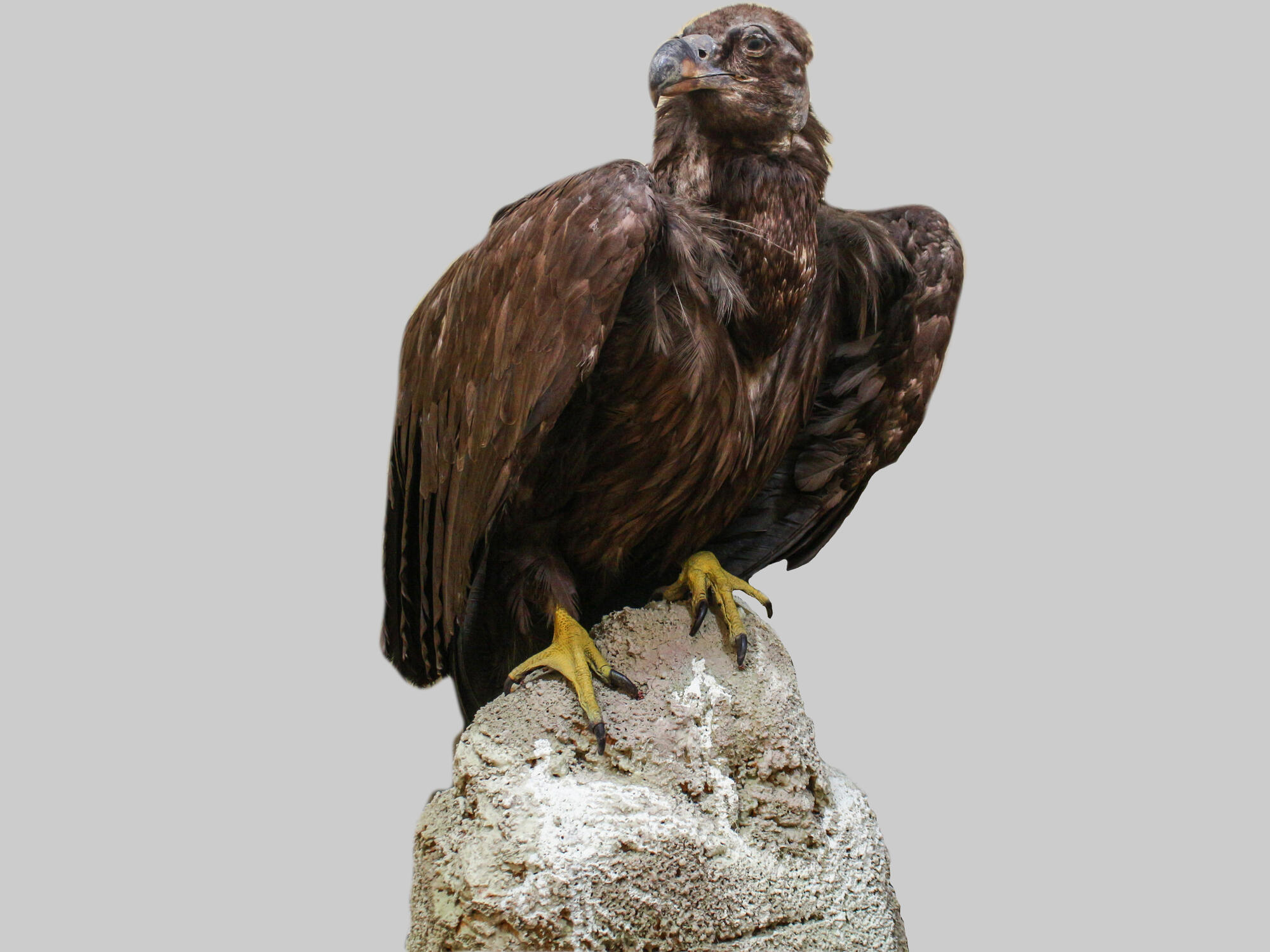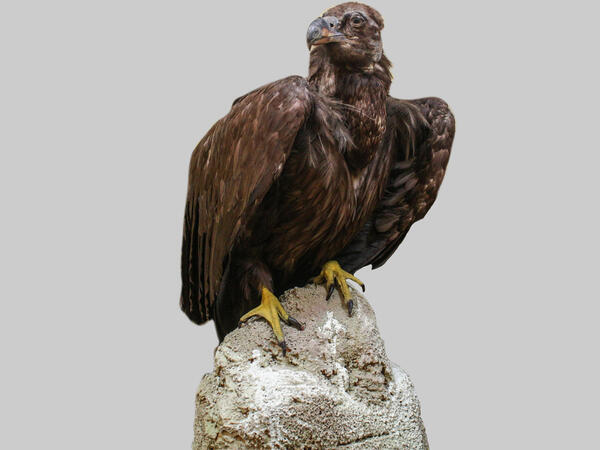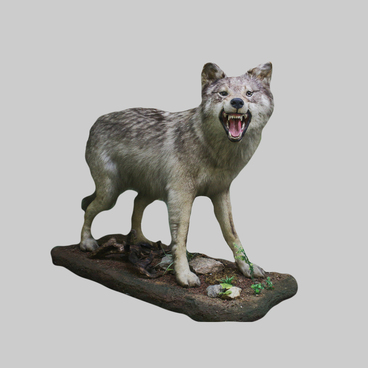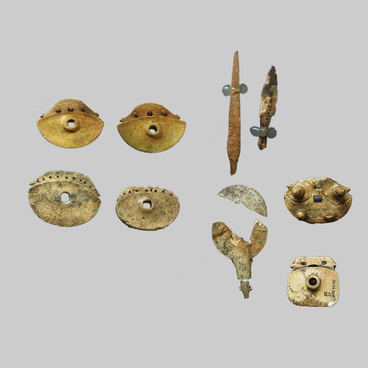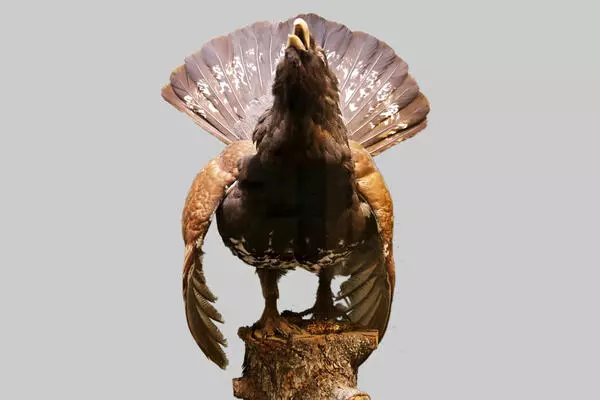The Eurasian black vulture, or cinereous vulture, is the largest bird in Russia. It has a total body length of up to one meter and up to 85 centimeters wing size, and weighs between 7 and 12 kilos. Its wingspan reaches 2.5 to 3 meters. Females are slightly smaller than males. Vultures have powerful beaks, but weak legs and claws. That is why they eat their prey on the spot, without carrying it anywhere. Despite its name, the Eurasian black vulture has grayish-brown plumage. Only young birds up to a year old are black.
Eurasian black vultures are typical daytime scavengers with excellent eyesight. They rise to a height of up to one km and cover vast areas while looking for the corpses of dead animals. Having found their prey, they descend at a speed of 70 to 80 kilometers per hour. They can fly up to 300 to 400 kilometers each day, staying in the air for up to five hours.
Vultures prefer to settle in open dry foothills and low-mountain terrain with a warm climate. Two or three vultures can devour the corpse of an adult saiga antelope in half an hour. They can eat up to five kilograms of meat at a time. Their stomachs can even digest cholera and anthrax pathogens. Hungry or very full Eurasian black vultures cannot take off from the ground, so they have to pick up speed or dive from a high cliff. Vultures very rarely flap their wings. They can fly about 18 kilometers without a single flap, simply soaring in the air.
Their mating rituals take place in the air and look like aerobatics. They build spacious, reliable, and durable nests up to two meters in diameter. The nests are usually located on old trees or on cliffs and rocky overhangs. The clutch usually contains a single egg, which both parents incubate for 52–56 days. Only 25% to 48% of chicks make it to adulthood. Sexual maturity is reached at five to eight years of age.
Eurasian black vultures are long-lived. They can survive up to 40 years in the wild and up to 50 years in captivity. Vultures were considered sacred In ancient Egypt, so some deities were depicted with the head of a vulture.
Eurasian black vultures are rare. The species is included in the Red List of Threatened Species.
Eurasian black vultures are typical daytime scavengers with excellent eyesight. They rise to a height of up to one km and cover vast areas while looking for the corpses of dead animals. Having found their prey, they descend at a speed of 70 to 80 kilometers per hour. They can fly up to 300 to 400 kilometers each day, staying in the air for up to five hours.
Vultures prefer to settle in open dry foothills and low-mountain terrain with a warm climate. Two or three vultures can devour the corpse of an adult saiga antelope in half an hour. They can eat up to five kilograms of meat at a time. Their stomachs can even digest cholera and anthrax pathogens. Hungry or very full Eurasian black vultures cannot take off from the ground, so they have to pick up speed or dive from a high cliff. Vultures very rarely flap their wings. They can fly about 18 kilometers without a single flap, simply soaring in the air.
Their mating rituals take place in the air and look like aerobatics. They build spacious, reliable, and durable nests up to two meters in diameter. The nests are usually located on old trees or on cliffs and rocky overhangs. The clutch usually contains a single egg, which both parents incubate for 52–56 days. Only 25% to 48% of chicks make it to adulthood. Sexual maturity is reached at five to eight years of age.
Eurasian black vultures are long-lived. They can survive up to 40 years in the wild and up to 50 years in captivity. Vultures were considered sacred In ancient Egypt, so some deities were depicted with the head of a vulture.
Eurasian black vultures are rare. The species is included in the Red List of Threatened Species.
